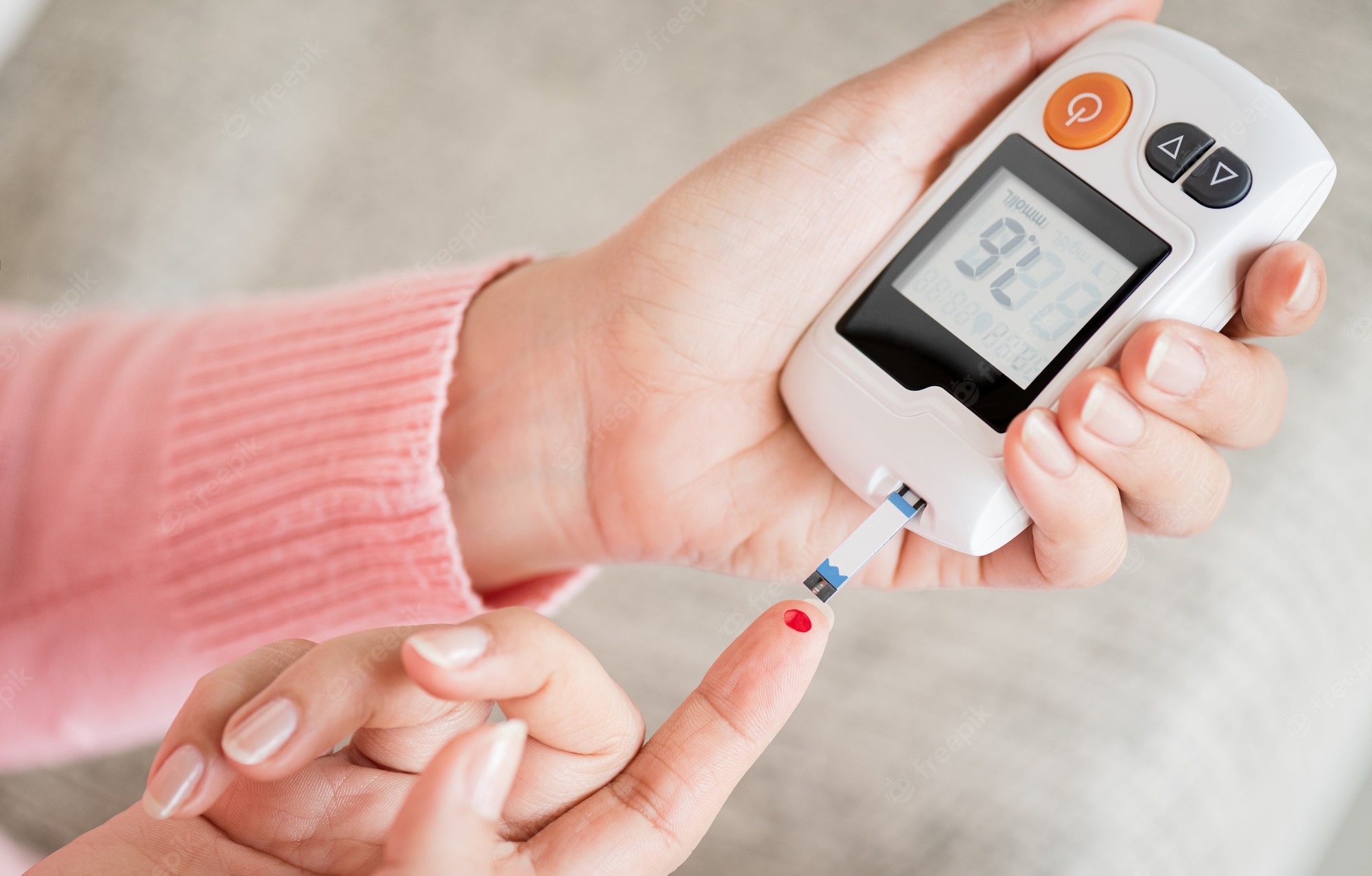Table of Contents
Is your blood glucose level in the normal range?
Uncontrolled blood sugar can cause complications to your health. A blood sugar test is the best way to know whether your glucose levels are in the normal range. A fasting blood sugar level of 99 mg/dL or lower is considered normal. Readings higher than 120 mg/dL over prolonged periods indicate chances of diabetes.
Dangerous blood sugar levels are usually associated with blood glucose ranges above 300 mg/dL or below 40 mg/dL. Both conditions are undesirable. Read this article to find out how to keep your sugar levels in check.
Recognising high blood sugar levels
Hyperglycemia or high blood sugar level happens when the body does not produce enough insulin to break down the glucose. Lack of sleep, stress, a sedentary lifestyle, and an unhealthy diet are some risk factors associated with this condition. Learn to recognise the signs early to prevent yourself from bearing the consequences of dangerous blood sugar levels. Here are the common symptoms of high blood sugar:
- Increased thirst
- Frequent urination
- Nausea and vomiting
- Fatigue
- Blurred vision
- Fruity breath
- Headache
- Unexplained weight loss
Recognising low blood sugar levels
Glucose levels below normal range or hypoglycemia may quickly escalate to seizures or coma if not dealt with quickly. High insulin doses, fasting, excessive alcohol consumption, and physical exertion contribute to hypoglycemia. Some common symptoms are:
- Profuse sweating
- Shakiness
- Confusion
- Increased pulse rate
- Irritability
- Dizziness
- Chills
Keep a watch on high and low blood sugar levels
A crucial step in effective diabetes management is not letting the body experience dangerous blood sugar levels. In the case of hypoglycemia, it is common for the individual to be unaware of the situation till the levels reach an alarming low. This condition is called hypo unawareness. One in four individuals with diabetes can be a victim of hypo unawareness.
State-of-the-art glucometers monitor blood glucose levels constantly to prevent the body from getting into hyperglycemic or hypoglycemic shock. The readings equip you and your healthcare provider to design suitable medication and diet plans to manage diabetes. Let us find out more about these machines.
Benefits of regular glucose monitoring
Uniform supervision of sugar levels can help make informed decisions about customised diabetes care. Various sugar test machines are available to help track your blood glucose volumes. Here are the advantages of using them:
- Better management of blood sugar
- Early detection of hyper and hypoglycemia
- Real-time graphical representation of glucose levels
- Prevention of diabetes-related complications
How blood glucose meters work
Glucometers are sugar-checking machines that use test strips sensitive to glucose oxidase enzymes. The capillary absorbs the blood sample up into the strip. It carries the blood to an electrode as the glucometer creates an electric current. The amount of glucose in the blood determines the amount of charge passing through the electrode. If the reading is 100 mg/dL, it indicates 100 mg of glucose is present in one decilitre of your blood.
A step-by-step guide to using a glucometer
Most over-the-counter sugar-checking machines or glucometers come with their own set of user manuals. The general breakdown of steps is similar for all, as listed below:
- Wash and clean your hands with soap.
- Insert the test strip after turning on the glucometer.
- Prick your finger with the lancet needle.
- Place the drop of blood gently at the edge of the test strip. Wipe away excess blood.
- Wait for a few seconds to read your results.
- Dispose of the lancet and strip after testing.
Things to keep in mind
While using glucometers, there are essential pointers you should not ignore. Not adhering to basic rules may lead to incorrect readings and faulty tracking.
- Do not expose test strips to extreme temperatures or moisture.
- Never share blood sugar monitoring equipment with anyone else.
- Read the instructions in the manual.
- Make sure the battery of the sugar-checking machine is charged before use.
- Sanitise the skin surface well before testing.
- Do not use expired test strips.
- Ensure the blood sample size is correct before placing it on the test strip.
- Clean and maintain the device regularly.
Certain factors like temperature, trace elements on the skin, moisture, anemia, and hypotension may affect the device’s accuracy. However, 99% of the time, glucometer results are consistent with laboratory results.
Top 5 picks in blood glucose meters
We have curated a list of the top 5 most commonly used and positively reviewed blood glucose meters available in India.
- Accu-Chek Active Glucometer
Reasonably priced, this glucometer is a lightweight device that shows readings within 5 seconds. You can connect the device to your smartphone or laptop. - Dr Morepen Gluco One Glucometer
This glucometer has a large display unit and can store up to 300 test results. - One Touch Select Plus Simple Glucometer
It comes with colour-coded technology to help understand low or high blood sugar ranges easily. The lancets are provided with a silicone coating to glide smoothly into the skin. - Dr Trust Fully Automatic Glucometer
The device has an alarm mechanism and a backlight display to make it readable easily. Only a minimum quantity of blood is required for testing. - Beat O Smart Glucometer
You may connect it to a smartphone via the Beat O app. Compact and accurate, it works with Androids and iPhones. It has an automatic alerting system to inform chosen family and friends in case of dangerously fluctuating sugar levels through the app.
The art of self-monitoring your blood glucose levels
A blood glucose meter is an investment for long-term health benefits and better diabetes management. If you constantly worry about your body reaching dangerous blood sugar levels, use glucometers to ensure your glucose is in control. Self-monitoring lets you check the effects of ongoing treatments on your blood sugar levels and make adjustments if needed. However, keep your healthcare provider looped in before making any changes based on glucose monitoring.


